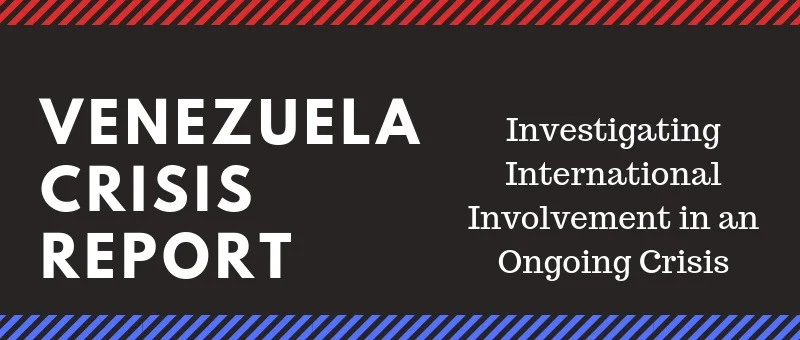Russia: Suspension of INF Treaty Likely to Result in the Development and Installation of Ground-Based Intermediate Range Missiles by Russia
Russian suspension of the INF Treaty suggests Russia is likely to focus on the development of nuclear capable missile systems in order to limit NATO reactions to recent Russian territorial acquisitions. The INF treaty was negotiated in 1987 to ban all nuclear and conventional ground launched ballistic and cruise missiles with ranges between 500 and 5,500 km; however, multiple U.S. and NATO investigations have consistently concluded that Russia is in violation of the treaty. [i] When the INF treaty is abandoned by both parties, the 2010 New Strategic Arms Reduction Treaty (New START) will be the only constraint on U.S. and Russian strategic warheads. [ii]
President Putin has declared that he will no longer initiate talks with the United States concerning nuclear arms control and has suspended Russia’s observance of the pact. [iii]
According to NATO foreign ministers, “Allies have concluded that Russia has developed and fielded a missile system the 9M729, which violates the INF Treaty and poses significant risks to Euro Atlantic security.”
Information concerning the 9M729’s internal designator for the mobile launcher chassis projects the missile system to have a range capability between 500 and 5,500 kilometers. [iv]
Russia continues to rapidly develop nuclear capable missiles, likely in order to limit NATO reactions to recent territorial acquisitions in the Ukraine. Russia is rapidly advancing its missile capabilities as seen with its development of the 9M729, underwater unmanned vehicles, and hypersonic ICBMs.
The head of the U.S. Strategic Command stated that “Russia is developing a nuclear-armed, a nuclear-powered underwater unmanned vehicle, an intercontinental-range cruise missile, and a hypersonic nuclear weapon, which Moscow wants to keep out of existing arms agreements.” [v]
Russia named U.S. military facilities that it would hit in response to a hypothetical U.S. nuclear strike on state run television. this show was immediately after Russia announced that it was developing a new hypersonic nuclear missile capable of flying over 620 miles, a distance that was prohibited under the INF treaty. [vi]
Russia has already deployed Iskander-M SRBM, S-400 SAM and Bal-E coastal defense systems to the Crimean Peninsula. [vii, viii] All aforementioned systems are primarily defensive in nature and can project force beyond Crimea’s borders.
Russia will likely seek to place the newly legalized ground-based intermediate range missiles along its western border given the termination of the INF treaty. The installation or deployment of any ground launched medium to intermediate range ballistic missiles by the US will likely result in Russian counteraction. Threatening political centers of other states, including the United States, is likely done as a “reflexive control operation.” [ix]
Russian President Vladimir Putin stated that with the end of the treaty, Russia will begin developing “land-based modifications of the sea-based Kalibr launching systems” and “land-based launchers for hypersonic intermediate-range and shorter-range missiles.” [x]
In an address by President Putin in February, he stated that missiles would not only be deployed to target Western strategic locations and forces, but also “territories where the centers of decision-making are located.” Targeting political centers is likely done in an effort to affect policy makers’ decisions. [xi]
On March 19, 2019, Russian Foreign Minister Sergey Lavrov eluded to the possibility of a multilateral arms race as a result of the end of the INF Treaty, according to Russian news agency TASS. [xii]
Dropping approval ratings may compel Putin to use force projection as a means to bolster domestic support. Putin has used aggression to boost approval rating frequently in the past and is likely to continue to do so in the future. [xiii]
Sources
[i]. Reif, Kingston. “Arms Control Today.” After the INF Treaty, What Is Next? | Arms Control Association, 2019, www.armscontrol.org/act/2019-01/news/after-inf-treaty-what-next.
[ii]. Pifer, Steven. “After INF, Is New START next to Go?” Brookings, Brookings, 29 Oct. 2018, www.brookings.edu/blog/order-from-chaos/2018/10/29/after-inf-is-new-start-next-to-go/.
[iii]. Kramer, Andrew E., and Megan Specia. “What Is the I.N.F. Treaty and Why Does It Matter?” The New York Times, The New York Times, 1 Feb. 2019, www.nytimes.com/2019/02/01/world/europe/inf-treaty.html.
[iv]. “Russian Compliance with the Intermediate Range Nuclear Forces (INF) Treaty: Background and Issues for Congress.” Congressional Research Service, 2019, fas.org/sgp/crs/nuke/R43832.pdf.
[v]. Gould, Joe. “US Nuclear General Worries over Russia's Weapons Outside New START.” Defense News, Defense News, 27 Feb. 2019, www.defensenews.com/smr/nuclear-arsenal/2019/02/26/us-nuclear-general-worries-over-russias-weapons-outside-new-start/.
[vi]. Litvinova, Daria. “Russian TV Touts Missile Targets in U.S. for Hypothetical ‘Vengeance," but Does Russia Want an Arms Race?” CBS News, CBS Interactive, 27 Feb. 2019, www.cbsnews.com/news/russian-tv-us-map-targets-vengeance-nuclear-strike-analysts-putin-arms-race/.
[vii]. “Russia Amasses 32,000 Troops, Iskander and S400 Systems in Crimea – Ukraine.” Information Agency, UNIAN, 24 Apr. 2018, www.unian.info/politics/10093373-russia-amasses-32-000-troops-iskander-and-s400-systems-in-crimea-ukraine.html.
[viii]. Rozin, Igor. “'Bal' Anti-Ship Missile System Relocates to Crimea.” Russia Beyond, 28 Nov. 2018, www.rbth.com/science-and-tech/329600-bal-anti-ship-missile-system.
[ix]. Osborn, Andrew. “Putin to U.S.: I'm ready for another Cuban Missile-style crisis if you want one.” Reuters, Thomson Reuters. 21 Feb. 2019. https://www.reuters.com/article/us-russia-putin/putin-to-u-s-im-ready-for-another-cuban-missile-style-crisis-if-you-want-one-idUSKCN1QA1A3.
[x]. Reif, Kingston. “Arms Control Today.” As INF Treaty Falls, New START Teeters | Arms Control Association, Mar. 2019, www.armscontrol.org/act/2019-03/news/inf-treaty-falls-new-start-teeters.
[xi]. Osborn, Andrew and Katya Golubkova. “Moscow ready to cut time for nuclear strike on U.S. if necessary: Putin.” Reuters, Thomson Reuters. 20 Feb. 2019. https://www.reuters.com/article/us-russia-putin-usa-missiles/moscow-ready-to-cut-time-for-nuclear-strike-on-us-if-necessary-putin-idUSKCN1Q918U.
[xii]. “INF Treaty Collapse May Trigger Arms Race in Several Regions, Moscow Warns.” TASS, Mar. 2019, tass.com/defense/1049284.
[xiii]. MacFarquhar, Neil. “Threatening U.S., Putin Promises Russians Both Missiles and Butter.” The New York Times. 20 Feb. 2019. https://www.nytimes.com/2019/02/20/world/europe/russia-missile-threat.html.






